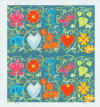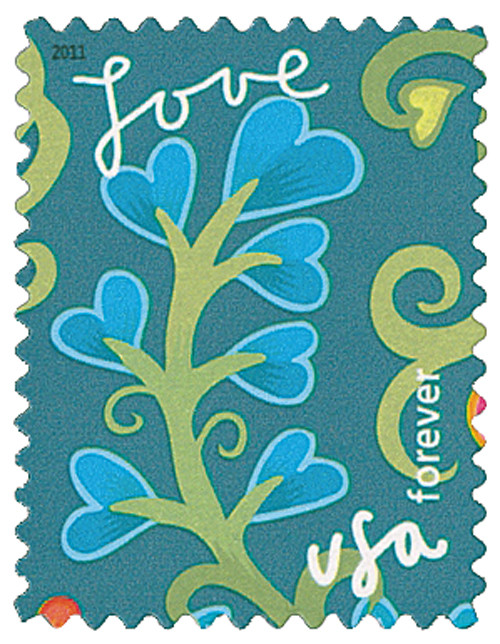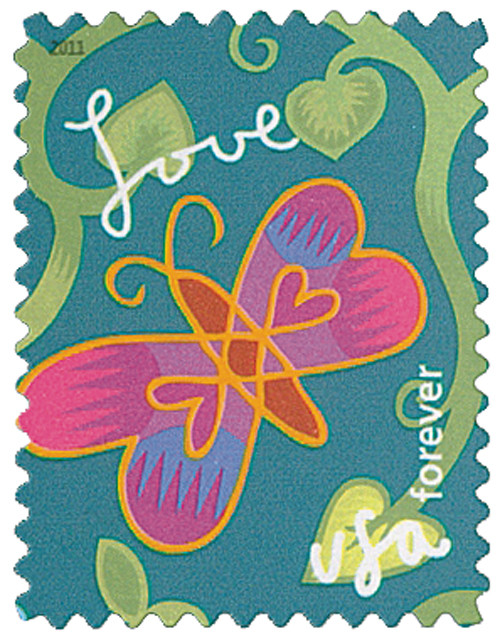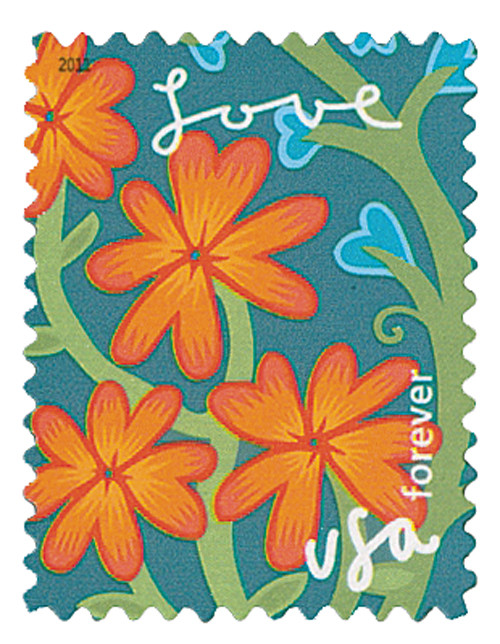
2011 First-Class Forever Stamp,Love Series: Garden of Love
# 4531-40 - 2011 First-Class Forever Stamp - Love Series: Garden of Love
$3.50 - $120.00
U.S. #4531-40
2011 44¢ Garden of Love
Issue Date: May 23, 2011
City: Crestwood KY
Quantity: 300,000,000
Printed By: Avery Dennison
Printing Method: Photogravure
Color: multicolored
In San Marino, California, the Huntington Desert Garden holds one of the world’s oldest and largest collections of cacti and other succulents.
The garden was first proposed in 1907 by William Hertrich to Henry Huntington, who had previously had a bad experience with prickly pear plants. Eventually, Huntington agreed and built a railway to haul in rocks, soil, and plants. The men collected desert plants from all over North, Central, and South America.
Today, the 10-acre garden is home to over 5,000 species of succulents (plants with leaves, stems, or roots that store water) and other desert plants throughout 60 landscaped beds. The 125-year-old tree-like Cereus xanthocarpus, also known as Queen of the Night, is the garden’s largest cactus, weighing 20 tons.
Throughout the garden’s lower section are a multitude of Yucca filifera, which reach a height of 60 feet. The upper section of the garden features a greenhouse holding 3,000 fragile succulents that could not survive rain or cold weather. The garden’s Beaucarnea, or ponytail palms, are some of the oldest-known cultivated specimens and were among the first to be planted in the garden.
Famous Brazilian landscape architect Roberto Burle Marx once called the Huntington Desert Garden “the most extraordinary garden in the world.”
U.S. #4531-40
2011 44¢ Garden of Love
Issue Date: May 23, 2011
City: Crestwood KY
Quantity: 300,000,000
Printed By: Avery Dennison
Printing Method: Photogravure
Color: multicolored
In San Marino, California, the Huntington Desert Garden holds one of the world’s oldest and largest collections of cacti and other succulents.
The garden was first proposed in 1907 by William Hertrich to Henry Huntington, who had previously had a bad experience with prickly pear plants. Eventually, Huntington agreed and built a railway to haul in rocks, soil, and plants. The men collected desert plants from all over North, Central, and South America.
Today, the 10-acre garden is home to over 5,000 species of succulents (plants with leaves, stems, or roots that store water) and other desert plants throughout 60 landscaped beds. The 125-year-old tree-like Cereus xanthocarpus, also known as Queen of the Night, is the garden’s largest cactus, weighing 20 tons.
Throughout the garden’s lower section are a multitude of Yucca filifera, which reach a height of 60 feet. The upper section of the garden features a greenhouse holding 3,000 fragile succulents that could not survive rain or cold weather. The garden’s Beaucarnea, or ponytail palms, are some of the oldest-known cultivated specimens and were among the first to be planted in the garden.
Famous Brazilian landscape architect Roberto Burle Marx once called the Huntington Desert Garden “the most extraordinary garden in the world.”



















